Supermicro Rack Scale Design (RSD) Solution Overview
Supermicro RSD, a rack-scale total solution, empowers cloud service providers, telecoms, and Fortune 500 companies to build their own agile, efficient, software-defined data centers. Built on industry-standard, RESTful Redfish APIs from Distributed Management Task Force (DMTF) and open-source Intel® Rack Scale Design software framework, Supermicro RSD integrated rack solution can be flexibly configured using Supermicro's broad and optimized server, storage and switch hardware products. Supermicro RSD total solution accelerates large scale data center deployments by elevating provisioning and management to the rack level and maximizes resource utilization through disaggregating compute, network and storage resources distributed within a rack or across multiple racks.
Key benefits of Supermicro RSD:
- Open RESTful API based rack-level management provides interoperability and scalability in cloud-scale infrastructure without vendor lock-in
- Disaggregated hardware and dynamic composability maximize utilization of compute, network and storage resources while meeting ever changing workloads
- Future-proof investment with existing and new disaggregated hardware. Pick and choose the best hardware building blocks to configure the racks that meet your specific workloads
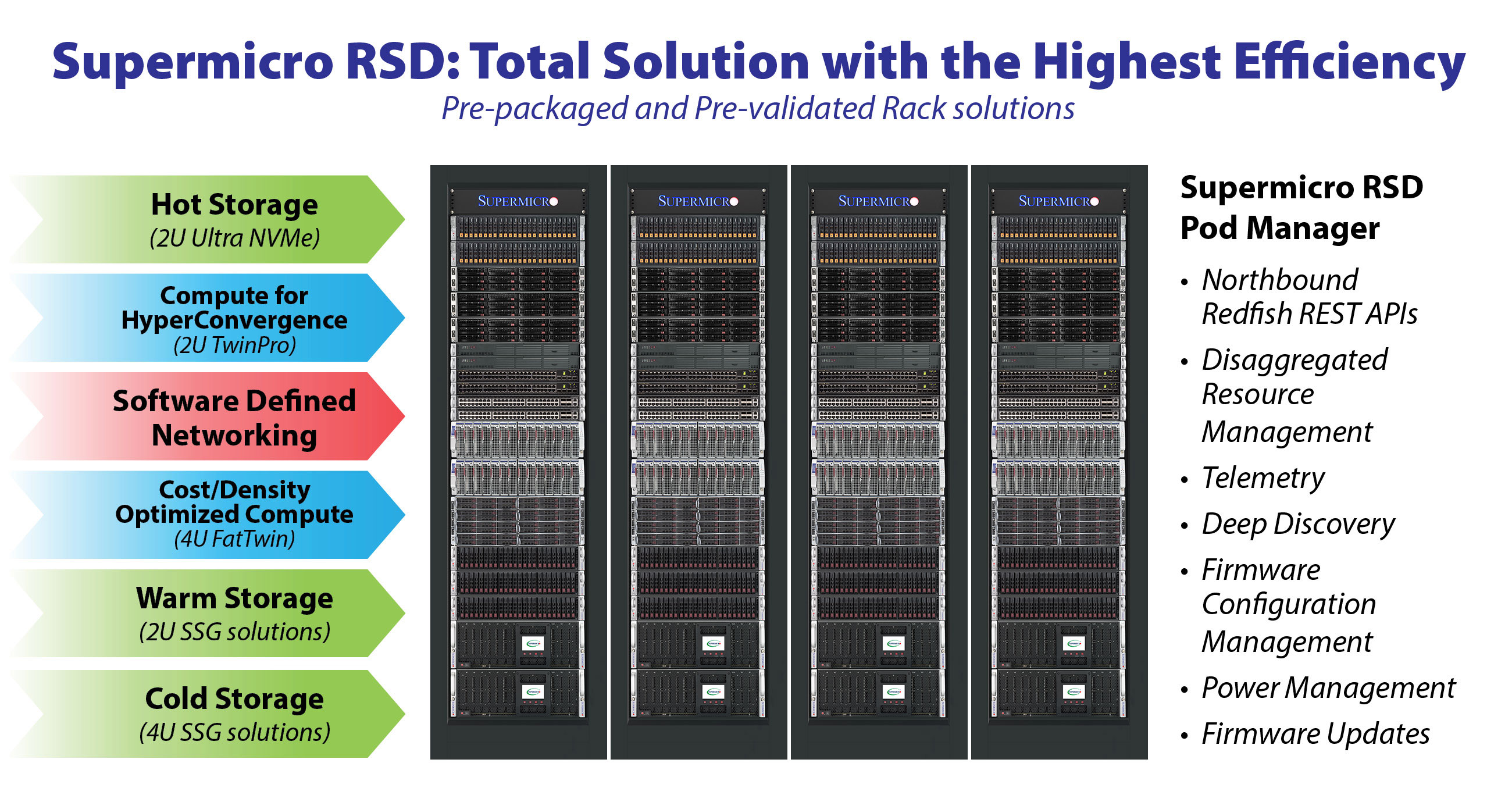
Supermicro RSD Software Components
Supermicro RSD includes the following software components:
- Pod Manager (PodM): A pod is a collection of physical racks. Pod Manager sits at the top of the logical software hierarchy and uses Redfish APIs to communicate with the racks that make up the pod. It manages and aggregates the hardware resources within multiple racks in the Pod by communicating with respective PSMEs and RMMs.
- Rack Management Module (RMM): RMM manages power and thermal resources within a rack by polling rack hardware and reports this information to PodM through Redfish APIs.
- Pooled System Management Engine (PSME): PSME acts as the drawer or chassis manager. PSME communicates with each BMC controller in the drawer/chassis and reports aggregated information such as telemetry and asset information through Redfish APIs to PodM.
- Pooled NVMe Controller (PNC): For the new pooled NVMe storage, the PSME equivalent is called PNC.
- Web UI: A browser-based graphical user interface that simplifies the management of RSD
To streamline Supermicro RSD deployments, all required management software components are packaged into a 1U management appliance with each software component running in its own container.
Supermicro RSD Hardware Requirements
Since Supermicro RSD runs on all X11-generation server and storage systems supporting Intel® Xeon® Scalable processors, and networking hardware, customers have the total flexibility to build optimized Supermicro RSD racks that best serve their needs.
A minimum Supermicro RSD rack includes the following hardware components:
- A 1U management appliance and all RSD related software. The ordering SKU is a SYS-1019C-HTN2 bare bone system (which CPU, at least 32GB Memory and 2 SSDs need to be added) and SFT-SMCI-SRSDM for the RSD software. A second management appliance can be ordered as a standby for high-availability applications.
- One Supermicro 1Gb Ethernet management switch for connecting the BMC controllers
- One Supermicro data switch, such as SSE-X3348TR (10GbE) or SSE-C3632SR (100GbE)
- Select your compute nodes from Supermicro's X11-generation server portfolio based on Intel® Xeon® Scalable processors. Popular server choices include, but are not limited to TwinPro™, BigTwin™, FatTwin™, Ultra, and MicroBlade™.
- Select your storage nodes from Supermicro's storage portfolio. Popular choices include the 32 NVMe SSDs in 1U disaggregated storage (SSG-136R-N32JBF), 2U Ultra with 24 NVMe as hot storage, 2U SSG with 24 SAS HDDs as warm storage and 60-bay or 90-bay JBODs as cold storage
Supermicro RSD 2.1 Key Features
The most exciting breakthrough in the latest Supermicro RSD total solution is the high-performance, high-density, and disaggregated NVMe storage. Based on Intel RSD spec 2.1, the arrival of this innovative technology marks the beginning of a paradigm shift to deploy truly disaggregated resource pools in today’s large scale data centers that will dramatically improve data center efficiency, increase utilization and reduce costs.
At just 1U rack space, Supermicro disaggregated NVMe storage supports 32 hot-swap 2.5" NVMe SSDs or the new Intel "Ruler" form factor and up to 1PB of NVMe storage capacity. With an innovative and elegant pull-out tray design for hot-swap and tool-less drive carriers, deploying and servicing the disaggregated NVMe storage in a Supermicro RSD deployment is extremely easy.
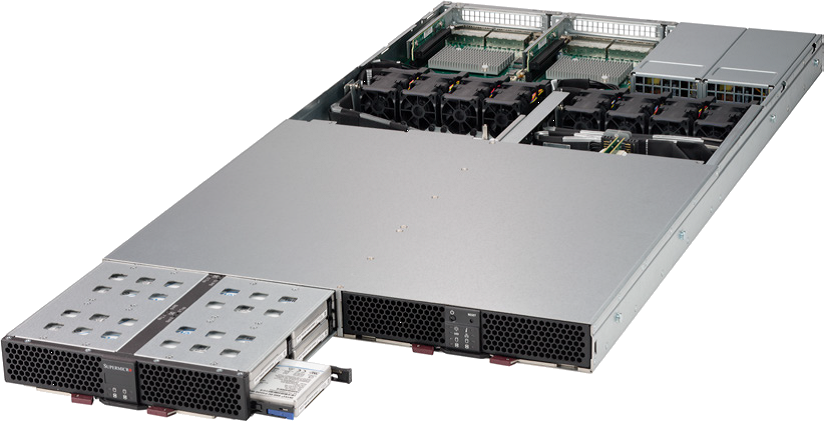
Other key features in Supermicro RSD 2.1 include:
- An interactive dashboard that provides the data center administrators an overview of all physical assets under RSD management
- An interactive, topological view of the physical rack and chassis in the Supermicro Pod Manager UI. Administrators can further select chassis in the rack to drill down on details at the component level such as BMC IP address, physical position in the rack, and so on
- Analytics and telemetry about system overview, utilization, CPU, memory and composed nodes. The historical data will not only help you understand how your system was used but also predict possible future system behaviors.
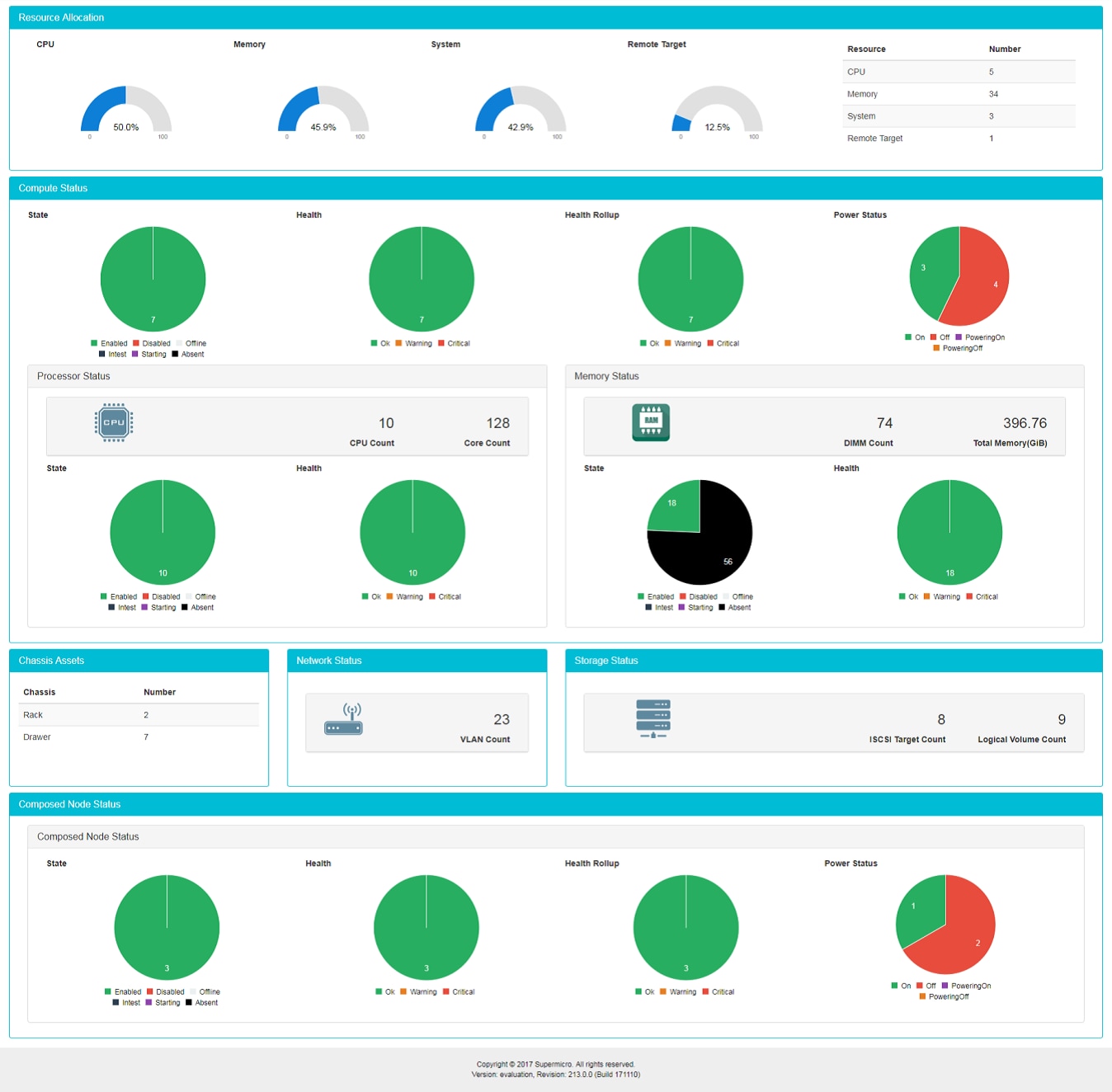
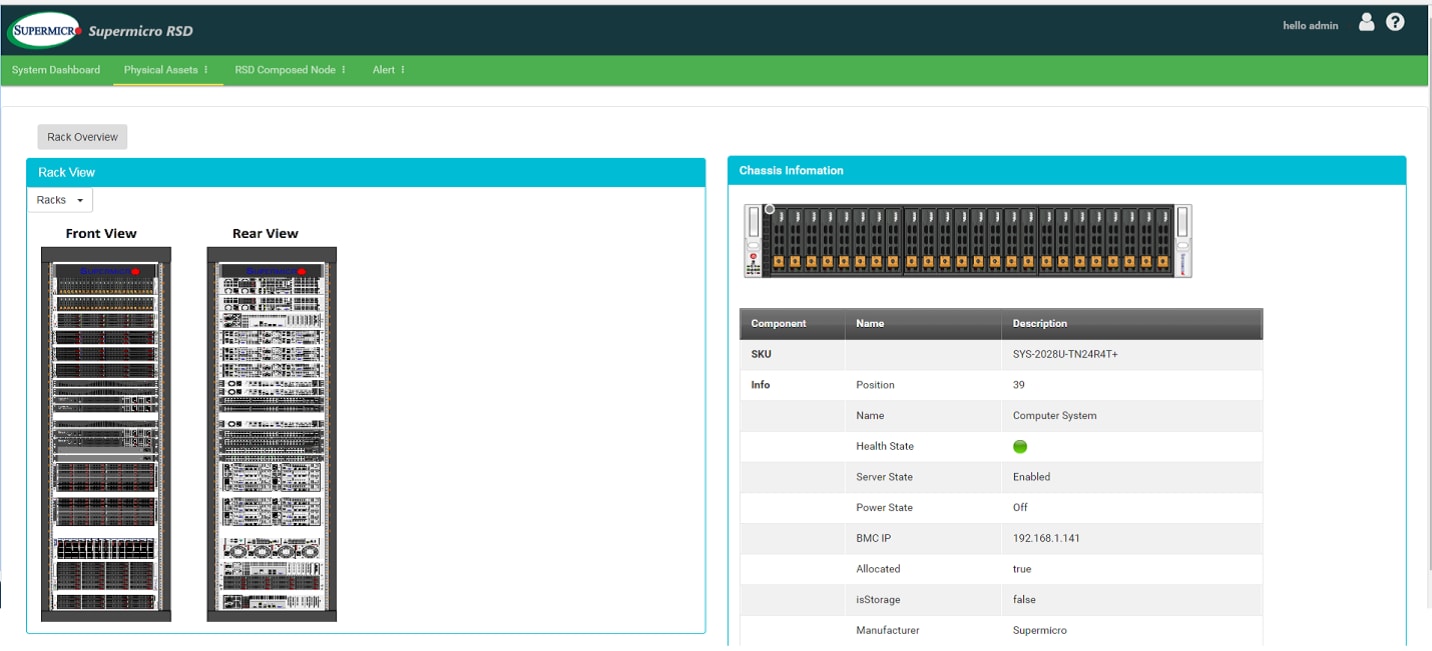
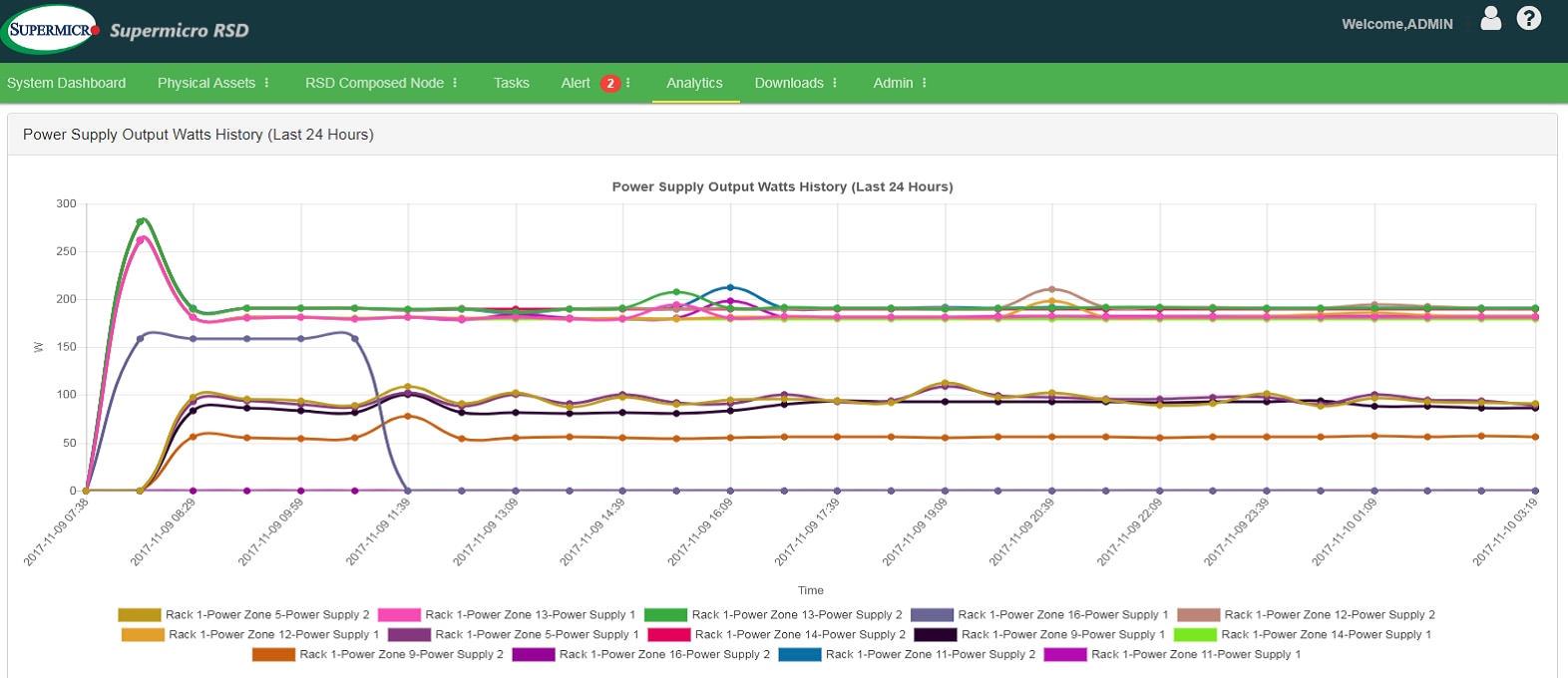
Try Supermicro RSD in one of our RSD Solution Centers
You can evaluate the flexibility, performance, efficiency and manageability of Supermicro's RSD systems today in the Supermicro RSD Solution Centers. Each center supports both on-site visits and remote access, allowing you to dynamically configure hardware resources for specific workloads using the RSD graphical user interface (GUI) or command-line interface (CLI).
To experience the Supermicro RSD Solution Centers and start experimenting with your own workloads, contact Supermicro today at: total_solutions@supermicro.com.
Link to Intel Cloud Builders Guest Blog:
https://cloudbuilders.intel.com/blog/supermicro-unveils-rack-scale-design-total-solution-at-idf-2016





